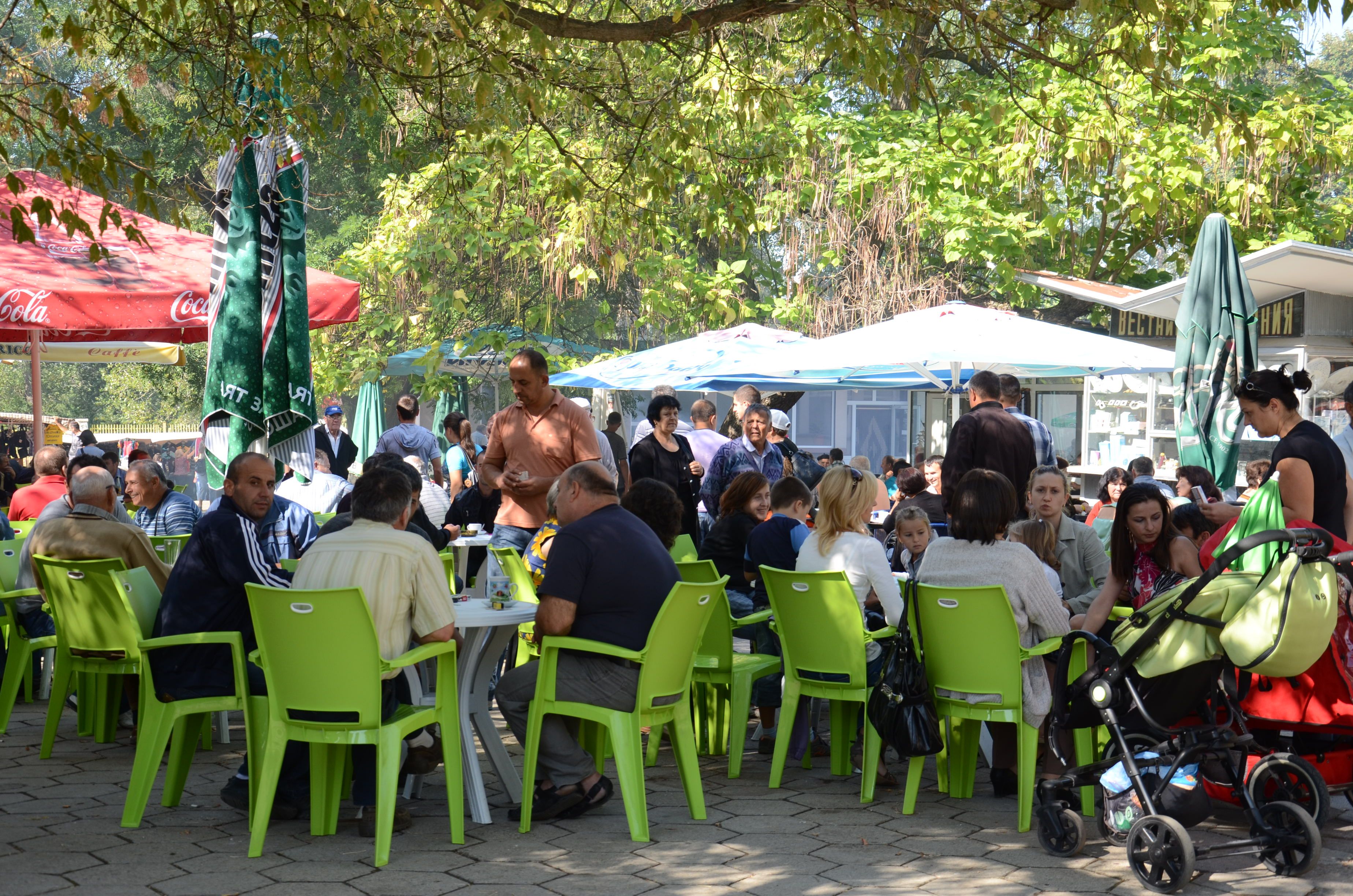Friday is market day in Krumovgrad. Monday through Thursday the town looks almost deserted, the cafés are empty, the streets are eerily quiet, and only the random gaggles of schoolchildren and the wailing prayers of the muezzin over the mosque’s loudspeakers break through the workday monotony. But Friday—Friday is different.
Krumovgrad is alive on Friday, wearing its Sunday best. It seems like all of its 6,000 inhabitants have suddenly decided to flash-mob the public spaces, as if upon a hidden signal. Men and women, young and not so young, Turks and Bulgarians and Pomaks and Roma. Some wear low-cut jeans and fashionable shades, pink shirts and hair gel, while others are dressed in traditional shalwars and headscarves and taqiyahs. Delicious, mouth-watering steam rises from the huge outdoor barbecues and there isn’t a single vacant seat in the open-air cafes and restaurants. Fidgety children form long lines in front of the ice-cream and cotton-candy machines. Pensioners have occupied the benches under the chestnuts, putting away for a few hours their canes and cares. The buzz of conversation—muhabbet—fills the autumnal air. Even the sky clears up on Fridays.
But it is the outdoor marketplace that is the true heart of the town. Craftsmen and farmers from all over the municipality gather here to sell their products: agricultural tools, pottery, shoes, vegetables, animal skins, meat, wine. The crowd moves slowly and deliberately, like viscous liquid, through the narrow channels between the stalls. You could always strike up a conversation with a stranger because nobody is really a stranger here.
Krumovgrad—Kosukavak, in Turkish—is not so very old, although traces of settlements in the area go back at least to the Bronze Age. In the 19th century, when this territory was part of the Ottoman Empire, there was a wooden mosque here and people would gather on Fridays for conversation and prayer and maybe some trade. It was only in 1913, during the Balkan Wars, that two local merchants opened shop and the town soon began to put on fat. Tobacco farmers and shepherds would trade their produce here; potters came in, then tanners; there was even production of silk cocoons. Houses started to spring up.
Today, Krumovgrad is just a small provincial town huddled in the southeast corner of Bulgaria, among the low-lying hills of the eastern Rhodope Mountains. There is nothing unique about it. It doesn’t offer any major architectural and natural wonders, and some could describe the place as unassuming: streets with rows of unimaginative two- and three-story houses, a few of those horrendous apartment blocks built during communism, a town square with flowerbeds and a bulky equestrian statue of Khan Krum (a medieval Bulgarian ruler, after whom the town was named), a church and a mosque, a small football stadium, and the trickling Krumovitsa river beyond.
That is what the town looks like on most days, except Fridays; on Fridays, everything is transformed, as in a fairytale. If Krumovgrad has something valuable, it is neither monuments nor sights, but a vibrant and gracious community—a community now pulled apart by a debate around the plans of a Canadian mining company to open a large open-pit gold mine on a prominent hill called Ada Tepe, just three kilometers from the town.
The mining proposal is the topic of conversation in every café. People argue about it, old friendships are broken, and neighbors are alienated from each other. The supporters claim that the company will help the depressed economy of the region by providing much needed employment; the detractors fear that the limited water resources will be contaminated, affecting the agricultural production in the whole region and the health of the people. Instead of adding jobs to the local economy, they claim, the company might end up destroying the few that are already there.
“Our real treasure is not gold but water,” says Usein Usein, 50, the owner of the downtown café Oasis and a local farmer. “How am I going to look at my grandchildren, when I know I’ve poisoned their lives? What do I do with the gold then?” Usein has grizzled stubble and the weary look of someone who knows intimately life’s complications. His wife had a miscarriage in 1986, after the fallout from the Chernobyl nuclear disaster affected large swaths of the Balkans, and he is particularly sensitive to environmental and health issues. “Terrorists blow up people once. But here the company wants to slowly poison us. They are worse than terrorists,” he says.
Severin Yordanov, 40, and Hassan Hassan, 27, regular customers at his café, disagree. “We’d just like to have jobs. There’s no money in tobacco agriculture anymore,” Hassan says, referring to the traditional industry of the Krumovgrad region.
Semovi Mestan, 42, and his wife Gulnaz Mestan, 42, also customers of Usein’s café, take the opposite view. Both of them work as shepherds and today their flock numbers 130 sheep, one of the largest in the region. They are afraid that the mining development would compromise the very foundations of their business. “If they open the mine, we’re leaving this place,” Semovi says. “We won’t be able to sell our sheep, the meat, nothing.”
And it goes like this, arguments traded back and forth, the whole day, over hand-rolled cigarettes and Turkish coffee.
